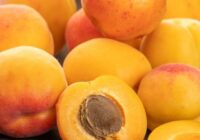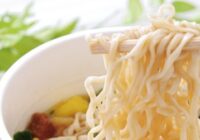Newsletter
Columns on Food Labeling/Regulations in Japan
1st Meeting on Foods with Nutrient Function Claims (FY2025), Japan – Review of Minimum and Maximum Permitted Levels and Functions of Nutrients
On October 8, 2025, the first meeting on Foods with Nutrient Function Claims (FNFC) (FY2025) (Japanese) was held.This fiscal year’s meeting will focus on two main issues: the minimum and maximum permitted levels, and the functions of nutrients. In this article, I would like to outline the background of the review of the FNFC system… more »
Amendments to the labelling requirements for the “free of sugars” claim in Canada
Following the public consultation held from January 17 to April 2, 2025, Health Canada announced amendments to the requirements for the use of the claim “free of sugars”, effective September 2, 2025. Summary I would like to hereby summarize the background of Nutrition Labelling based on the Table of Permitted Nutrient Content Statements and Claims… more »
Partial Amendment to Japan’s Food Labelling Standards Announced (FFC update!)
On October 1, 2025, the Consumer Affairs Agency (CAA) announced a partial amendment to the Food Labelling Standards and related regulations. Among the claims that were previously prohibited from emphasizing ingredients other than functional ingredients, certain wordings indicating the absence or non-addition of specific ingredients (e.g. “no XX added”, “does not contain XX”) will be… more »
1st Discussion of the year on Japan’s Front of Package Nutrition Labelling : (Summer 2025)
On July 29, 2025, the 1st Discussion on Japan’s Front of Package Nutrition Labelling (FOPNL) 2025 (in Japanese) was held and the guidelines for Japan’s FOPNL (draft) (in Japanese) were presented. As part of our on-going efforts to report on the situation, we would like to outline the labelling methods for Japan’s front of package… more »
U.S. FDA to Revoke 52 Standards of Identity for Food Products
On July 16, 2025, the U.S. Food and Drug Administration (FDA) issued the final rule eliminating 52 Standards of Identity (SOI). These standards were deemed “outdated,” and the rule aims to reduce unnecessary regulations while increasing flexibility for the food industry. The SOIs establish food standards such as the minimum fruit content in jam. Since… more »
Revision of Japanese Guidelines for Legal Seafood Product Names – with Background
The First Meeting of the FY2025 Discussion Meeting on the Draft Revision of the guidelines for the legal product names of seafood (Shellfish) (Japanese)was held on June 2, 2025. The discussion proceeded based on the background and framework of the existing guidelines (Japanese) and the reasons behind the proposed revisions (Japanese). In this article I… more »
New Mandatory Warning Label Requirements in Texas and Louisiana, USA
On June 22, 2025, in the state of Texas, USA, Senate Bill 25, which requires warning labels for certain food additives, was passed. Food products containing ingredients such as artificial color, titanium dioxide, and partially hydrogenated oil will therefore be required to label a warning stating: “WARNING: This product contains an ingredient that is not… more »
Extension of Nutri-Grade Labelling Requirements to further categories in Singapore
The Ministry of Health (MOH) of Singapore announced on April 6 that it will extend Nutri-Grade labelling requirements beyond beverages, which have already been subject to the measures, to include prepacked salt, sauces, seasonings, instant noodles, and cooking oil (hereafter: SSSIO) starting from mid-2027. Nutri-Grade labelling is an initiative that evaluates products based on the… more »
Proposed amendments to prohibited claims for FFC, and Review of labelling rules for individual food items originating from former Food Sanitation Act (Japan)
On June 13, 2025, the Consumer Affairs Agency (CAA) announced the launch of a public comment period on the Cabinet Office Ordinance (Draft) to partially amend the Food Labelling Standards (Japanese). For Foods with Functional Claims (FFC)*, the use of wording that highlight ingredients other than functional ingredients (with some exceptions) is prohibited. The proposed… more »
Amendment to Guidelines for setting date labelling on foods (Japan)
In March 2025, the Consumer Affairs Agency (CAA) amended the Guidelines for setting date labelling on foods (Japanese). This update stems from the Policy package toward achieving food loss reduction targets (December 2023) (Japanese), which called for a review of the previous guidelines (February 2005) (Japanese) to examine current practices for determining date labelling and… more »










